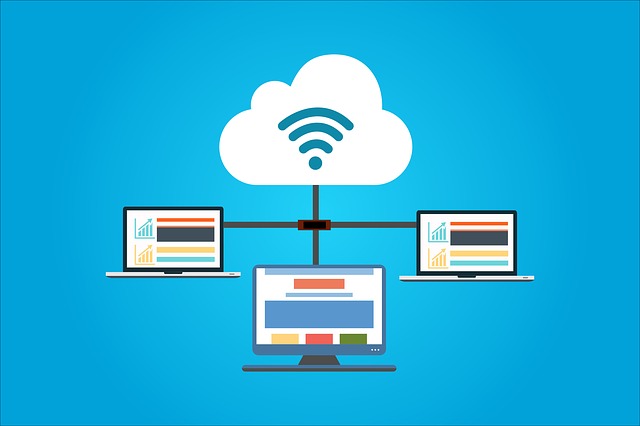Wondering how to create a webinar? Creating and hosting a webinar is not as difficult as you may think.
If your webinar content offers real value to your target audience, you'll have no problem converting viewers into prospects, leads and customers.
Key Takeaways
Disclosure: Although I receive affiliate compensation at no additional cost to you to support this site that compensation in no way influences my recommendations, which are strictly informed by my 10+ years of online business experience consulting for clients large and small. My aim is to always recommend tools that offer the best return for your investment (for more details, read my Affiliate Disclosure).
How Do You Create and Host Your Webinar in 7 Steps?
Webinars have many moving parts that need to integrate well with one another to create a great experience for your viewers.
Here are seven clear steps that’ll help you create your first webinar without a hitch:
1. Create your webinar content
The most important thing to remember when creating webinar content is that it should be designed to solve a problem your target audience is experiencing.
Once you’ve nailed this down, you can work on the second most important thing: your call to action, so that you can turn your viewers into leads or even customers.
To learn how to create great content without spinning your wheels, follow these 5 easy content creation steps.
2. Create questions for surveys and polls
Next, you need to lay out the foundation for audience engagement: questions. In fact. 81% of webinars have a Q&A section.
All popular webinar platforms offer a suite of audience engagement features, like polls, surveys, question boxes and chat boxes.
There are three types of questions you should consider for your webinar:
- Close-ended questions that can be answered with a simple yes or no via chat. These are questions you want to ask regularly throughout your presentation to keep people engaged (e.g. has anyone ever experienced writer’s block? Enter yes or no in your chat box)
- Survey questions to assess where your audience is at in relation to your topic (e.g. if you’re teaching email marketing strategies, you could poll your audience with the following live poll: should you send drip emails to your customers twice a week? once a week? once every two weeks or once a month?)
- Polling questions to assess the percentage of your audience members that are for or against a given premise. You can then use the live results from the poll to adjust your content delivery based on the responses (e.g. do you collect emails on your website? yes/no)
3. Choose your webinar software

When it comes to webinar hosting, there’s a wide array of solutions available.
Some are more or less technically involved than others, some require external integrations to other tools and platforms (e.g. email marketing) and some are all-in-one solutions.
Your choice will depend on a number of factors, like cost, ability to pre-record webinars for evergreen strategies, availability of payment processing, if you want to collect funds, landing page builders, etc.
You’ll find our recommendations for the top webinar software in this article.
4. Select Your Webinar Equipment
You may choose to use the built-in microphone, speakers and camera of your laptop to run your webinar for their convenience, but you’ll soon find out their audio and video quality is sub-optimal.
If you want to create a professional image, you’ll need to acquire more specialized equipment so that you can offer a polished product.
Click these links to find the best microphones, headphones and webcams for your webinar.
5. Create your webinar registration and follow up emails
Now, it’s time to create the social glue to develop a solid bond with your audience.
Most webinar hosting platforms offer registration forms and follow up emails in one way of the other.
However, fight the temptation to use their default settings and messaging.
You want to be able to adapt the branding of your registration form to your website, sharing the same color palette, logos, font, etc.
You also want to compose your own emails with messaging that reflects who you and your company are.
Otherwise, you’ll be using the same default text everybody else does and you’ll not be differentiating yourself from your competitors.
Also, top platforms will offer you the ability to A/B test your marketing copy. Take advantage of this important feature.
It’s not uncommon to see a doubling of your conversion rate by simply changing an image or a couple of phrases here and there.
And the only way to really find out what marketing messages works is through trial and error.
6. Learn best webinar-hosting practices

Once your webinar has been created, your audience engagement questions laid out, and your registration, reminder and follow up pieces are in place, it’s time to focus on you, the host.
As they say in the world of face-to-face communications, you never get a second chance to make a first impression, and this is not different for webinars.
When it comes to presentations, be it offline or online, the same rules apply. You want to be able to establish early rapport with your audience and hook them from the very beginning.
7. Prerecord or deliver your webinar live?
There are two main ways to deliver a webinar. The most common one is doing it to a live audience.
However, this approach doesn’t work well when you have an international audience several time zones away.
It’s not reasonable to ask someone who has to work the next day to stay up until 3 in the morning to attend your webinar.
A more practical approach is to use a pre-recorded webinar and run it through an automated “evergreen” hosting platform.
In this way, your viewers will only be presented with a viewing schedule that works well in their time zones.
Frequently Asked Questions
How long does it take to create a webinar?
Creating a webinar from scratch typically takes one to two weeks of preparation and another week of planning and production before recording or delivering the event live.
How long is a webinar?
Most webinars range between 30 and 60 minutes. Some can go longer if they have an extended Q&A, but most people will tune out after an hour, if not before.
How do I create a paid webinar?
There’s not much difference between the creation process of a free and a paid webinar offering.
However, paid webinars demand a much higher level of expertise from the hosts and a higher level of depth in the presentation to justify the expense.
Also, paid webinars often require a lot of downloadable collateral materials, like workbooks, checklists, spreadsheets, etc. that make part of your value proposition.
What to Look for in a Webinar Platform?
There are a few key things to look for in a webinar platform.
Firstly, it should be easy to set up and use. From camera and mic settings to landing pages and email reminders, you shouldn't have to be a tech expert to get your webinar up and running.
Secondly, it should offer a range of features and tools to help you engage with your audience and deliver an impactful presentation.
From a chat box, a question box, polls and surveys to evergreen features for looped canned webinars such as simulated live chats, plus plenty of integrations with third-party platforms like CRMs, marketing automation tools and payment processors.
Finally, it should be reliable — there's no worse experience for your brand than your webinar freezing or crashing halfway through due to platform issues, leaving dozens or hundreds of participants hanging in limbo!
Wrapping Things Up
Now, you know how to create a webinar in 7 easy steps. Your next step is to promote your webinar to your target audience.
If you’d like to see a bird’s eye view of everything related to webinars, including how to engage with your audience and what are the most commonly used webinar features, read this article on what webinars are and how they work.







